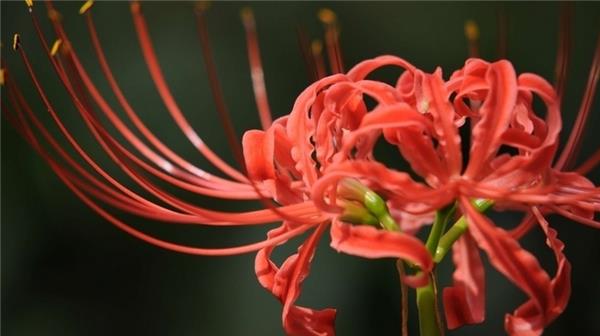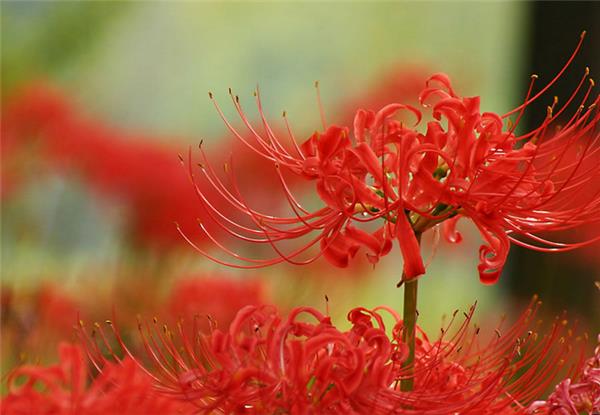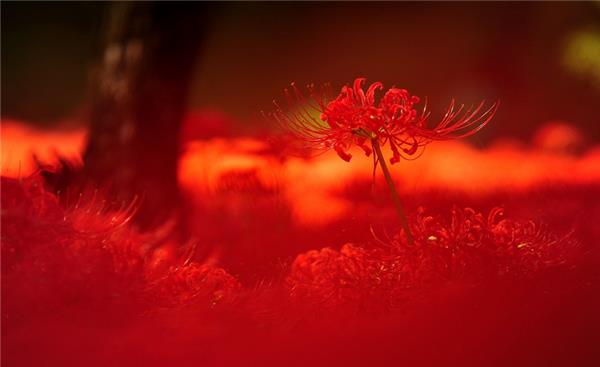Introduction and breeding methods of Manzhu Shahua how to cultivate elegant and elegant Manzhu Shahua
Manzusa is a bulbous plant. The bulb looks a bit like a narcissus. The flower is a flower at the top of an empty stem. This flower has a special smell, which is a bit like garlic. Let's take a look at Manjusaka's knowledge.

I. Introduction to Manjusaka
Lycoris is a self-pollinated plant with a dehiscent capsule and numerous seeds that generally reproduce once every 3-4 years as bulbs. Because flowers and leaves never meet, born and cherish each other, so the name of the other shore flower. Because it can detumescence, insecticide, cure lymph node tuberculosis, furuncle, rheumatism joint pain, snake bite, edema, kill maggots, deratization, prevent plague, etc., it is also called the patron saint of health, also known as she hua or sarira, manzhu shahua

2. Cultivation techniques of S. mandshurica
1. horticulture
Manzusa is a common ornamental plant in East Asia. Its leaves are appreciated in winter and its flowers in autumn. Generally, it is appropriate to divide the bulbs after flowering, apply enough base fertilizer when cultivating, cover the bulbs with soil, and irrigate them thoroughly.
2. growth culture
Manzusha is easy to cultivate, generally after flowering, it is appropriate to divide the bulb cultivation, apply enough base fertilizer during cultivation, cover the bulb with soil, irrigate water, black flower bulb is easy to feed, keep wet for a year will not die.
Peel off the bulblets around the main bulb for propagation. Cut off the residual roots of the main ball, dry it for two days, and plant it after the wound dries. When covering the earth, the top of the ball should be exposed to the earth surface. Potted plants are selected to grow for 3 years and can flower large balls (more than 7 cm in diameter) potted plants, which can be potted with one ball or 3~4 balls. To plant shallow, make 1/3-1/2 of the ball on the ground. Watering once after the basin, so that the soil can be slightly moist. Water after new leaves have sprouted. Apply liquid fertilizer once every half month. In autumn when the leaves are thick and ripe, water can be stopped.

Wait for 2~3 months, after budding, give again turn over basin or change basin soil. Cultivation soil can be prepared by mixing 2 parts of peat, 2 parts of garden soil and 1 part of pearlite, and a small amount of base fertilizer is added at the same time. Summer dormancy period watering should be less, spring and autumn need to often keep the pot soil moist. Thin cake fertilizer water is applied once every half month in the growing season. Lycoris likes semi-shade, avoid direct sunlight in summer, maintain in semi-shade in spring and autumn, strictly control watering and stop fertilizing during winter. Post-flowering treatment and pest control Lycoris should be cut after flowering to reduce nutrient loss.
Cultivation environment requirements: planting depth should not be too deep, just buried in the top of the bulb surface as well. The soil quality requires sandy soil with good drainage or loose culture soil, acidic soil, proper amount of base fertilizer applied during planting and irrigation after cultivation; during the vegetative growth period, irrigation should be frequent to keep the soil moist, but no water should be accumulated to prevent bulb decay. Water must be supplied from 20 days before flowering to flowering to achieve uniform flowering and easy maintenance of flowers.

3. planting and cultivating
Planting: can be open field cultivation, greenhouse potted, frame cultivation or hydroponic.
Potted plants: Manjusaka likes scattered light, does not like strong light, so the light should not be too strong. Manjusaka's requirements for soil are usually nothing. However, it was a southern flower after all, so the soil should be acidic soil, a little sandy, breathable and water-permeable. All year round, there is ornamental value on the ground, there are leaves without flowers, flowers without leaves.
Manzusha adaptability is strong, bulbs have dormancy phenomenon, the north needs potted viewing, manzusha planted at the end of May should also be able to flower manzusha square cultivation suitable time: should be planted in spring (April-May). Most varieties prefer warm climate, the highest temperature is not more than 30℃, the average temperature of ten days is 24℃, suitable for the growth of Manzusa. After 10 days of sowing, the roots grow vigorously and the leaves grow out of the ground successively. In winter, the daily average temperature is above 8℃, and the minimum temperature is 1℃, which does not affect the growth of S. mandshurica. Water should not be too much, otherwise it will make its roots rot. manjusaka, the
The above is Manjusaka knowledge, I hope it can help you.
- Prev

Introduction and culture method of small plant reticulate grass in plaid shirt
Introduction and culture method of small plant reticulate grass in plaid shirt
- Next

Introduction and Culture method of mysterious and small African Flower African Violet
Introduction and Culture method of mysterious and small African Flower African Violet
Related
- Wuhan Hospital Iron Tree Blooming Result Was Instantly Frightened by the Gardener Master
- Which variety of camellia is the most fragrant and best? Which one do you like best?
- What is the small blue coat, the breeding methods and matters needing attention of the succulent plant
- Dormancy time and maintenance management of succulent plants during dormancy
- Minas succulent how to raise, Minas succulent plant pictures
- What are the varieties of winter succulent plants
- How to raise succulent plants in twelve rolls? let's take a look at some experience of breeding twelve rolls.
- Attention should be paid to water control for succulent plants during dormant period (winter and summer)
- Watering experience of twelve rolls of succulent plants
- Techniques for fertilizing succulent plants. An article will let you know how to fertilize succulent plants.

